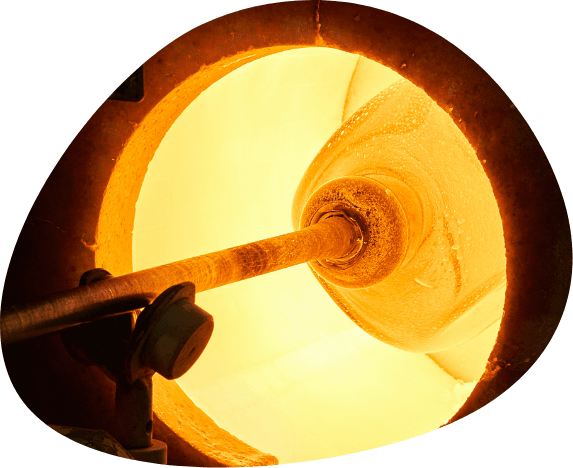Shisha pechlar qanday tasniflanadi?
Glass kilns can be classified according to different classification standards. Common classifications include:

1. Based on the products manufactured, it is mainly divided into:
- Flat glass kiln
- Daily glass kiln
2. According to the molding method, it is mainly divided into:
- Float glass kiln;
- Flat-drawn glass kiln;
- Lead the glass kiln vertically.
3. According to the heat source used to melt glass, can be divided into:
- Flame kiln uses burning fuel as the source of heat energy;
- Electric kiln, which uses electric energy as the source of heat energy;
- Flame electric kiln, which mainly uses fuel and is supplemented by electric energy.

4. According to the continuity of the melting process, it is mainly divided into:
- In an intermittent kiln, the various stages of glass melting are performed sequentially in the same part of the kiln at different times, and the temperature system of the kiln changes;
- In a continuous kiln, the various stages of glass melting are carried out in different parts of the kiln at the same time, and the temperature system of the kiln is stable.
5. According to flue gas waste heat recovery equipment, it is mainly divided into:
- Regenerative kiln, which recovers flue gas waste heat in a regenerative manner;
- Heat exchange kiln, which thermally recovers flue gas waste heat.
6. According to the direction of flame flow in the kiln, it is mainly divided into:
- Horizontal flame kiln, that is, the flame in the kiln flows horizontally, perpendicular to the glass flow direction. Most of the large glass kilns in my country are of this form;
- Horseshoe flame kiln, that is, the flame in the kiln flows in a horseshoe shape, mostly used in medium and small glass kilns;
- Longitudinal flame kiln, that is, the flame in the kiln flows longitudinally, parallel to the flow direction of the glass liquid.
 Rongsheng refrakter zavodi
Rongsheng refrakter zavodi
WeChat
QR kodini wechat orqali skanerlang